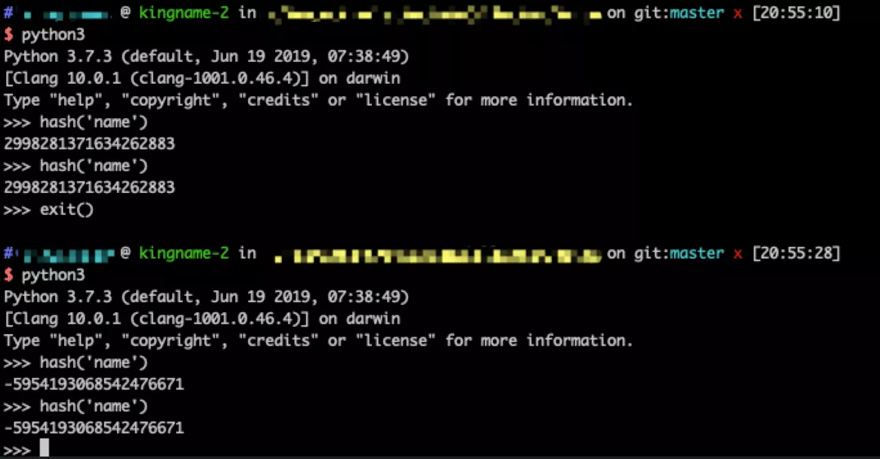通过源码分析Python中的切片赋值
本文主要介绍的关于Python切片赋值的相关内容,分享出来供大家参考学习,下面来一起看看详细的介绍:
昨天有同学问了我这么个问题:
t = [1, 2, 3] t[1:1] = [7] # 感谢@一往直前 的疑问,之前写为 t[1:1] = 7了 print t # 输出 [1, 7, 2, 3]
这个问题之前还真没遇到过,有谁会对列表这么进行赋值吗?不过对于这个输出结果的原因确实值得去再了解下,毕竟之前也看过《Python源码分析》。(题外话:据说最近有大牛在写新的版本)
想着今天有空看看Python的源码,去了解下原理是什么。
注:我本地之前下载的是Python2.7.6的代码,直接看的这个。
在Objects/listobject.c中有一个 PyList_SetSlice 函数,是这么写的:
int
PyList_SetSlice(PyObject *a, Py_ssize_t ilow, Py_ssize_t ihigh, PyObject *v)
{
if (!PyList_Check(a)) {
PyErr_BadInternalCall();
return -1;
}
return list_ass_slice((PyListObject *)a, ilow, ihigh, v);
}
有用的一句就是 list_ass_slice ,那么再来看看这个函数的代码:
static int
list_ass_slice(PyListObject *a, Py_ssize_t ilow, Py_ssize_t ihigh, PyObject *v)
{
/* Because [X]DECREF can recursively invoke list operations on
this list, we must postpone all [X]DECREF activity until
after the list is back in its canonical shape. Therefore
we must allocate an additional array, 'recycle', into which
we temporarily copy the items that are deleted from the
list. :-( */
PyObject *recycle_on_stack[8];
PyObject **recycle = recycle_on_stack; /* will allocate more if needed */
PyObject **item;
PyObject **vitem = NULL;
PyObject *v_as_SF = NULL; /* PySequence_Fast(v) */
Py_ssize_t n; /* # of elements in replacement list */
Py_ssize_t norig; /* # of elements in list getting replaced */
Py_ssize_t d; /* Change in size */
Py_ssize_t k;
size_t s;
int result = -1; /* guilty until proved innocent */
#define b ((PyListObject *)v)
if (v == NULL)
n = 0;
else {
if (a == b) {
/* Special case "a[i:j] = a" -- copy b first */
v = list_slice(b, 0, Py_SIZE(b));
if (v == NULL)
return result;
result = list_ass_slice(a, ilow, ihigh, v);
Py_DECREF(v);
return result;
}
v_as_SF = PySequence_Fast(v, "can only assign an iterable");
if(v_as_SF == NULL)
goto Error;
/*
the5fire注:
要赋值的长度n
*/
n = PySequence_Fast_GET_SIZE(v_as_SF);
vitem = PySequence_Fast_ITEMS(v_as_SF);
}
if (ilow < 0)
ilow = 0;
else if (ilow > Py_SIZE(a))
ilow = Py_SIZE(a);
if (ihigh < ilow)
ihigh = ilow;
else if (ihigh > Py_SIZE(a))
ihigh = Py_SIZE(a);
norig = ihigh - ilow;
assert(norig >= 0);
d = n - norig;
if (Py_SIZE(a) + d == 0) {
Py_XDECREF(v_as_SF);
return list_clear(a);
}
item = a->ob_item;
/* recycle the items that we are about to remove */
s = norig * sizeof(PyObject *);
if (s > sizeof(recycle_on_stack)) {
recycle = (PyObject **)PyMem_MALLOC(s);
if (recycle == NULL) {
PyErr_NoMemory();
goto Error;
}
}
memcpy(recycle, &item[ilow], s);
if (d < 0) { /* Delete -d items */
memmove(&item[ihigh+d], &item[ihigh],
(Py_SIZE(a) - ihigh)*sizeof(PyObject *));
list_resize(a, Py_SIZE(a) + d);
item = a->ob_item;
}
else if (d > 0) { /* Insert d items */
k = Py_SIZE(a);
if (list_resize(a, k+d) < 0)
goto Error;
item = a->ob_item;
printf("关键点\n");
/*
the5fire注:
把list对应切片后一位的值之后的所有内容向后移动所赋值的大小
按照上面的python代码这里就是
原理的t:
|1|2|3|
后移一位,因为len([7]) = 1
|1|空|2|3|把后两个移位
*/
memmove(&item[ihigh+d], &item[ihigh],
(k - ihigh)*sizeof(PyObject *));
}
/*
the5fire注:
赋值操作,即把[7]赋值到t里的对应位置上
ilow是1, n是1
*/
for (k = 0; k < n; k++, ilow++) {
PyObject *w = vitem[k];
Py_XINCREF(w);
item[ilow] = w;
}
for (k = norig - 1; k >= 0; --k)
Py_XDECREF(recycle[k]);
result = 0;
Error:
if (recycle != recycle_on_stack)
PyMem_FREE(recycle);
Py_XDECREF(v_as_SF);
return result;
#undef b
}
看了知乎,stackoverflow上的解答,发现源码还是最好的解释。上述关键位置已经加了注释,应该很好理解。
总结
以上就是这篇文章的全部内容了,希望本文的内容对大家的学习或者工作能带来一定的帮助,如果有疑问大家可以留言交流,谢谢大家对【听图阁-专注于Python设计】的支持。

